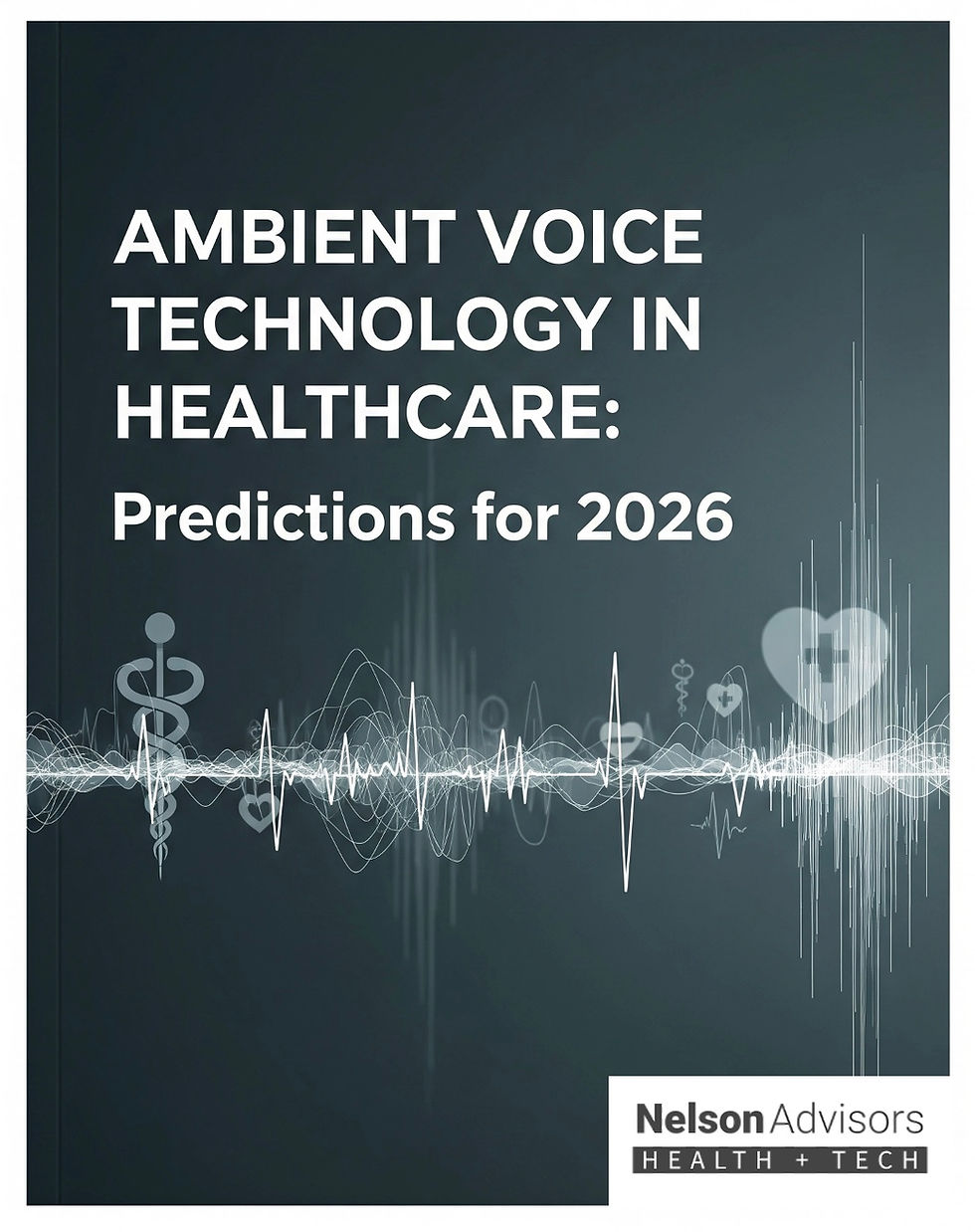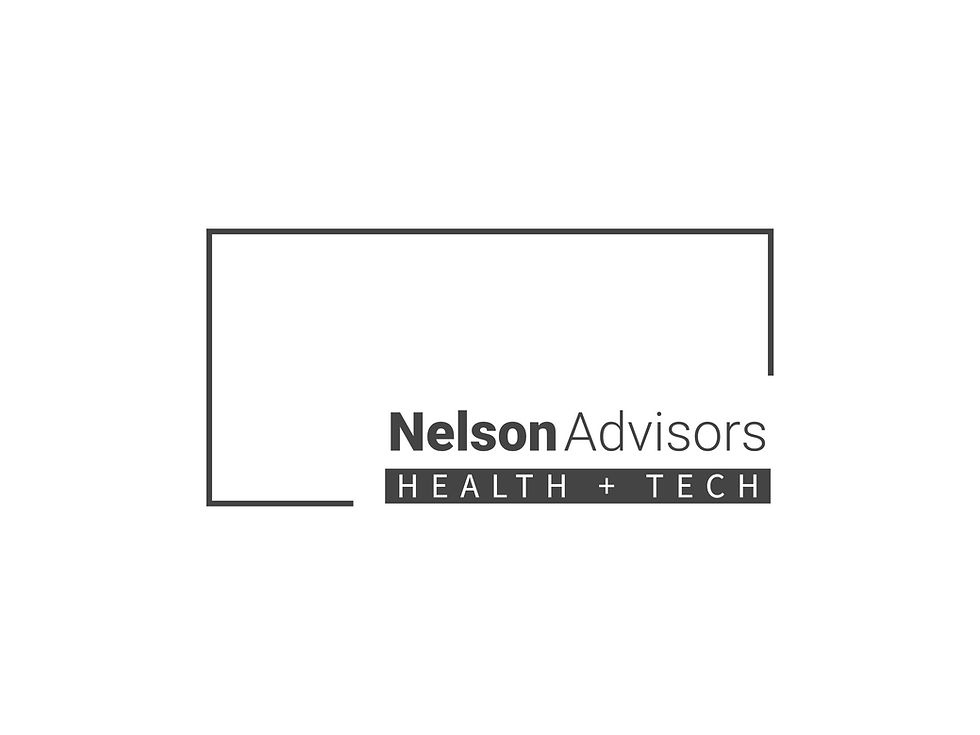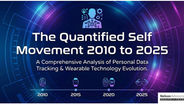Ambient Voice Technology in Healthcare: Predictions for 2026
- Nelson Advisors

- Sep 4
- 13 min read

Executive Summary: The Silent Revolution in Healthcare
Ambient Voice Technology (AVT), once considered a speculative innovation, is rapidly evolving into a strategic necessity for healthcare organizations. Fuelled by an urgent need to combat clinician burnout, address rising administrative workloads, and enhance operational efficiency, AVT is poised to fundamentally reshape the clinical workflow. The market is transitioning from an experimental phase to a mature, regulated ecosystem where this technology is no longer a luxury but a foundational layer of modern care delivery.
Key predictions for 2026 indicate a period of explosive growth and maturation. The analysis suggests that AVT adoption will reach critical mass, with an estimated 320% increase in implementation plans among healthcare executives. Financially, the technology's value proposition will be irrefutable, proving to be not only a cost-saver by reducing administrative overhead but also a direct driver of new revenue through increased patient throughput and higher coding accuracy.
This market expansion, however, will be met with a maturing and increasingly stringent regulatory landscape, exemplified by the UK’s reclassification of AVT as a medical device (SaMD). This will force vendors and health systems to prioritise robust governance and compliance to mitigate clinical and legal risks. Looking beyond mere documentation, the technology will evolve into a proactive clinical partner, integrating with wearables, providing real-time decision support, and orchestrating entire clinical workflows. The ultimate success of this transformation will hinge on addressing critical challenges related to patient trust, algorithmic bias, and seamless interoperability, turning these hurdles into opportunities for competitive differentiation and long-term value creation.
The Foundation: Defining Ambient Voice Technology and Its Value
A New Paradigm of Clinical Documentation
Ambient Voice Technology, also referred to as Ambient Clinical Intelligence (ACI) or ambient listening, represents a new paradigm for clinical documentation. It is an artificial intelligence-driven tool that operates unobtrusively in the background, passively capturing and transforming natural conversations between a clinician and a patient. The technology leverages a sophisticated combination of automatic speech recognition (ASR), large language models (LLMs), and clinical knowledge graphs to interpret the spoken dialogue and convert it into a structured, well organised clinical note. This process is fundamentally different from traditional voice recognition systems, which often require active commands, structured dictation, and extensive user training. While older systems functioned as basic dictation tools for data entry, modern AVT is designed to understand context, differentiate speakers, and filter clinically relevant information from casual conversation without interrupting the natural flow of the encounter.
The problem this technology aims to solve is a national-level crisis: the administrative burden that leads to widespread clinician burnout. Physicians often find themselves spending more time on paperwork than on direct patient care, with documentation tasks consuming significant "Pajama Time" after hours. By automating this time-consuming work, AVT directly addresses a root cause of professional dissatisfaction and inefficiency. The technology is projected to free up an average of 35 minutes per clinician each day and reduce documentation time per note by up to 75%. This reclaimed time allows providers to focus on what matters most: the patient in front of them.
Value Proposition for Stakeholders
The value of Ambient Voice Technology extends far beyond a simple productivity boost, creating significant benefits for both clinicians and patients. For clinicians, the quantitative and qualitative benefits are substantial. The technology reduces after-hours work by up to 70% and lowers the cognitive load associated with documentation, directly mitigating burnout. More importantly, it enables clinicians to shift their attention away from a computer screen and towards the patient, fostering more meaningful and effective interactions. This improved presence and focus are a core benefit frequently cited by physicians who have adopted the technology.
For patients, the impact is equally profound. When a physician is not preoccupied with typing or staring at a screen, patients report feeling more engaged, heard, and that their doctor truly understood their concerns.This enhanced interaction improves patient satisfaction and can even lead to better adherence to treatment plans, as trust and clear communication are foundational to the patient-physician relationship.
The effectiveness of this technology is rooted in a powerful, symbiotic relationship: the reduction of clinician burden directly enables an improved patient experience. The technology's dual-sided value proposition is a key driver of its rapid adoption, as it simultaneously addresses the business imperative of efficiency and the human imperative of quality care.
A Market in Momentum: Adoption, Investment and ROI
Market Size and Investment Forecasts
The ambient AI market is currently in a state of rapid expansion, with predictions pointing to an unprecedented infusion of capital and a clear trajectory toward becoming a multi-billion dollar segment by 2026. The investment community has recognised the technology's potential, pouring nearly $1 Billion into ambient AI companies in 2025 alone, positioning it as one of the most successful use cases for AI in healthcare to date.
While market size projections vary based on definition, the collective data signals explosive growth. For instance, some forecasts place the global AI in healthcare market at over $8 Billion by 2026, while the broader conversational AI market is projected to reach $16.9 Billion by 2025. Regardless of the specific numbers, the trend is clear: significant investment is fuelling a period of rapid innovation and market consolidation, indicating that ambient voice technology is becoming a foundational element of healthcare IT infrastructure.
The Tipping Point: From Early Adopters to Widespread Implementation
By 2026, ambient voice technology is expected to move from an experimental tool to a standard component of clinical practice in many settings. A survey of 130 healthcare executives revealed a 320% growth in planned implementation for clinical documentation AI by 2026, with the number of organisations planning to adopt the technology jumping from 10% to 42%. This shift signifies the "part two" of AI's adoption story in healthcare, where the focus expands from revenue-related functions like scheduling and coding to historically problematic areas like clinical documentation and clinician satisfaction.
While organisations are adopting the technology at an "unprecedented rate," clinician adoption is still in "very early stages" in some cases, particularly in acute care settings. This suggests that the initial phase of market growth is driven by top-down, C-suite mandates and pilot programs, which are then expected to lead to the predicted high adoption rates.
The next phase of adoption, crucial for reaching the predicted 75% to 80% utilisation rates seen in some early-adopter organisations, will depend on successful change management and a clear demonstration of value to frontline providers. This requires a bottom-up approach where a positive experience, shared through word-of-mouth among clinicians, becomes the primary driver of broader adoption.
The Financial Imperative: ROI and Revenue as Key Drivers
The financial case for ambient voice technology is becoming indisputable, fundamentally changing the narrative from a cost center to a direct revenue driver. The quantitative data on cost savings is compelling. Ambient AI scribes typically cost between $49 and $199 monthly per provider, representing a 60% to 75% cost savings when compared to a human scribe. This automation also eliminates the need for expensive transcription services, which can add thousands of dollars in annual costs per provider.
However, the most powerful metric for healthcare executives is the potential for new revenue generation. By reducing documentation time, the technology enables physicians to see more patients in a given day. The analysis shows that adding just two extra patients daily can generate $104,000 in additional annual revenue per physician. This tangible financial return, coupled with significant operational gains, makes a compelling case for investment. The following table provides a consolidated view of the projected financial and operational impact of ambient AI, demonstrating its multifaceted value proposition for healthcare systems.
Navigating the Vendor Landscape
The Dominant Players and Their Strategic Differentiators
By 2026, the ambient voice technology market will likely see a clear consolidation, with a handful of dominant players distinguishing themselves through strategic EHR integrations and specialisation. Microsoft, following its acquisition of Nuance, has emerged as a major player, offering its Dragon Copilot solution. Abridge, Ambience Healthcare, and Suki are also noted as dominant startups that have raised significant funding rounds in 2025.
The primary competitive differentiator among these vendors is deep, bidirectional EHR integration. The Epic Workshop partnership between Microsoft and Abridge is a notable example, allowing them to develop native integrations that are highly valued by Epic-using organisations.
Ambience Healthcare boasts seamless integration with Epic's Hyperdrive and Haiku, using native FHIR APIs to read and write information directly into the EHR without manual data entry. Similarly, Suki highlights its "bidirectional, read/write capabilities" with all leading EHRs, allowing clinicians to pull pre-charted information and vitals into their notes, eliminating the need for copy-paste.
Beyond integration, vendors are specializing to meet the unique needs of different clinical workflows. Ambience Healthcare, for example, has adapted its platform to the language, priorities, and workflows of over 200 specialties, including complex and underserved domains like oncology and psychiatry. Suki, described as a "true assistant," goes beyond note generation to recommend codes, generate orders, and answer clinical questions, positioning itself as a comprehensive tool for workflow orchestration.
Vendor Name | Key Differentiators | EHR Integrations | Noteworthy Partnerships / Funding |
Microsoft/Nuance | Dragon Copilot, native integrations, analytics capabilities | Epic, Oracle Health | Epic Workshop Partnership |
Abridge | Deep clinical/operational workflow focus, prior authorization support, evidence-traceability | Epic | Epic Workshop Partnership, $150M Series C |
Ambience Healthcare | Adapts to 200+ specialties, strong focus on revenue integrity and coding | Epic, native FHIR APIs | Featured in Epic Toolbox |
Suki | Bidirectional read/write with all major EHRs, order staging, Q&A | Epic, Oracle Health, athenahealth, Meditech, Zoom | $70M Series D in late 2024, Zoom Ventures investment |
Emerging and Strategic Plays from Big Tech
While startups focus on gaining market share through deep EHR integrations, big tech companies are making foundational moves that could reshape the long-term landscape of healthcare AI. These players are not simply building scribes; they are prototyping the next generation of ambient intelligence.
OpenAI's partnership with Penda Health in Kenya to deploy a clinical copilot is a clever strategic move. Low-resource environments provide a perfect testbed with lean workflows, simpler documentation needs, and fewer legal roadblocks. The lessons learned in these constrained settings can be used to quietly shape the next iteration of the clinical copilot that will eventually show up in developed markets like Boston or Berlin. This approach allows for rapid prototyping and validation of core technology outside of highly regulated environments.
Simultaneously, Google's quiet unveiling of SensorLM, a foundation model trained not on clinical notes but on wearable sensor data, marks a subtle but significant shift.
The future of healthcare AI is not just in parsing documents, but in understanding physiology, passively, continuously, and in real-time, using data from heart rates, sleep cycles, and gait changes. This development lays the groundwork for a new generation of ambient diagnostics and chronic disease monitoring.
The existence of such technology in a "regulatory grey zone" highlights the tension between rapid innovation and the need for oversight, a challenge the industry will need to navigate carefully.
The Reality Check: Navigating Critical Challenges
The Trust Conundrum: Patients, Providers and Privacy
Despite the significant benefits, the widespread adoption of ambient voice technology faces substantial challenges, particularly concerning trust, privacy, and data security. The continuous collection of sensitive data raises fundamental ethical questions, including patient privacy and data management. It is an ethical and legal obligation to obtain transparent, informed consent from patients before a consultation is recorded, as some may feel uncomfortable or even withhold critical information if they are not properly informed.
For healthcare organisations, this requires stringent measures, including the encryption of Protected Health Information (PHI) both at rest and in transit, and a thorough vetting of vendors to ensure they comply with regulations like HIPAA by signing Business Associate Agreements (BAAs). The psychological impact of "always-on microphones" and the fear of surveillance is a vital human-factors challenge that goes beyond technical implementation. The success of this technology depends on its ability to fade into the background and enhance human connection by freeing up the clinician's attention, rather than creating a new layer of anxiety.
The Clinical Risk: Hallucinations and Automation Bias
A significant clinical risk is the potential for errors in AI-generated content. As general-purpose LLMs are built for linguistic plausibility rather than absolute truth, they can "hallucinate" or invent text that was never spoken. These errors can have severe consequences, from misdiagnoses to incorrect prescriptions, as demonstrated in early trials by the FDA and NHS.
A related and perhaps more insidious risk is "automation bias," which describes a provider's tendency to overly rely on the AI's output without careful review. The high accuracy rates of 95% to 98% claimed by vendors can paradoxically increase this risk. The more "perfect" the AI seems, the less likely a human is to check its work. This places an immense burden on health systems to establish robust governance and audit protocols, and it underscores the industry's consensus that AVT must function as a "human-in-command" (HIC) tool, not an autonomous one. The clinician remains solely responsible for the accuracy and integrity of the patient's medical record, making vigilant oversight a non-negotiable part of the new workflow.
The Regulatory Reckoning: Reclassifying AI as a Medical Device
The regulatory landscape is maturing rapidly, and in 2026, it will be defined by a global divergence in regulatory approaches. The UK's reclassification of summarisation-capable ambient voice technology as a Software as a Medical Device (SaMD) in April 2025 is a game-changing precedent. This reclassification subjects AVT to stringent requirements, including registration with the Medicines and Healthcare products Regulatory Agency (MHRA), clinical safety assessments, and the maintenance of a detailed technical file. The UK's national chief clinical information officer issued a Priority Notification in June 2025 requiring the immediate cessation of non-compliant tools, warning that continued use could make both organisations and individual clinicians personally liable for any resulting harm.
This aggressive, patient-safety-driven stance contrasts with the FDA's more measured approach in the United States, which has focused on creating a framework for AI in drug development and exploring methods to "tag" devices that use LLMs for transparency.
The UK is effectively acting as a "regulatory testbed," sending a powerful signal that vendors and health systems can no longer treat compliance as an afterthought. This shift will mature the market by forcing vendors to invest in rigorous regulatory strategies, moving away from a "move fast and break things" startup culture to one of meticulous compliance and evidence-based development.
Predictions for 2026 and Beyond: Beyond the Scribe
The Shift from Reactive Documentation to Proactive Intelligence
By 2026, ambient voice technology is predicted to evolve from a passive scribe into an active clinical partner, providing real-time intelligence at the point of care. The next generation of platforms will move beyond simply generating notes to offering real-time diagnostic nudges and prompts, such as "Ask about β-blockers," which could eventually reach an FDA-cleared decision support class. This evolution will be driven by multi-modal integrations, where AVT is combined with other data streams. For example, the development of foundation models like Google's SensorLM, trained on wearable sensor data, could enable predictive diagnostics by analysing heart rates, sleep cycles, and gait changes in conjunction with a patient's voice data.
Ultimately, the technology is poised to become an "ambient OS layer" that orchestrates the entire clinical workflow, moving beyond a single note. This will include automated tasks such as generating lab orders, drafting prior authorisations, and suggesting billing codes based on the ambient conversation. The clinician's role will shift from a data entry clerk to an editor and strategic decision maker, with the AI handling the rote work and freeing up time for what truly matters: clinical judgment and patient interaction.
Expanding Use Cases and Ecosystems
Ambient voice technology is expected to proliferate into new, more complex clinical environments beyond its current primary and ambulatory care strongholds. In mental health, ambient AI could be used to capture conversational transcripts and tag emotional cues, providing valuable insights for therapists. In high-pressure surgical settings, the technology will support hands-free documentation and allow surgeons to access records without breaking sterility.
Furthermore, AVT will become a critical component of remote patient monitoring and population health management, enabling proactive, personalized outreach for chronic disease management, medication adherence, and emergency response, such as during extreme weather events.
The Future of the Clinician: A Reclaimed Focus
The ultimate promise of ambient voice technology is to fundamentally reshape the clinician's role, enabling a return to a truly patient-centric practice. The new human-AI partnership will redefine the clinician's job from a data entry clerk to an editor and strategic decision-maker, with the AI handling the rote administrative tasks. The "human-in-command" model is the new standard of care. This partnership will give clinicians the time and cognitive bandwidth to focus on the human aspects of care: maintaining eye contact, practicing empathy, and applying strategic clinical judgment.
Conclusion: The Road Ahead
Ambient Voice Technology is not merely a tool; it is a foundational layer for a more efficient, profitable, and ultimately, more human centred healthcare system. The journey to 2026 will be defined by a delicate balance between rapid innovation and responsible governance.
For healthcare leaders, success will hinge on a thoughtful and strategic approach. The analysis recommends prioritizing deep EHR integration over standalone tools to ensure a seamless workflow and maximum value. It is also crucial to invest in robust change management and transparent communication with patients and staff to build trust and encourage bottom-up adoption. Finally, health systems must implement strict governance and oversight protocols to mitigate the risks of automation bias and ensure the clinician remains in full control of the patient record.
For technology vendors, the path forward requires a new level of maturity. The analysis suggests a heavy investment in regulatory compliance and evidence-traceability, particularly in light of the UK's reclassification of AVT as a medical device. Developing and fine-tuning models with diverse, domain-specific data will be essential to reduce bias and hallucinations, which are major barriers to trust and safety.
For policymakers and regulators, the challenge is to develop clear, agile frameworks that promote innovation while prioritising patient safety and data privacy. The UK's approach offers a precedent, and collaboration between regulators and industry is paramount to ensure that the rapid advancements in AI can be harnessed for the benefit of all stakeholders without compromising the core principles of ethical and safe care. The future of healthcare is speaking, and the industry is finally ready to listen.
Nelson Advisors > HealthTech and MedTech M&A
Nelson Advisors specialise in mergers and acquisitions, partnerships and investments for MedTech, Digital Health, HealthTech, Health IT, Consumer HealthTech, Healthcare Cybersecurity, Healthcare AI companies based in the UK, Europe and North America. www.nelsonadvisors.co.uk
Nelson Advisors regularly publish MedTech and Healthcare Technology thought leadership articles covering market insights, trends, analysis & predictions @ https://www.healthcare.digital
We share our views with MedTech and Healthcare Technology insights, analysis and predictions in our LinkedIn Newsletter every week, subscribe today! https://lnkd.in/e5hTp_xb
Founders for Founders > We pride ourselves on our DNA as ‘HealthTech founders advising HealthTech and MedTech founders.’ Nelson Advisors partner with entrepreneurs, chair persons, boards and investors to maximise shareholder value and investment returns. www.nelsonadvisors.co.uk
#NelsonAdvisors #MedTech #HealthTech #DigitalHealth #HealthIT #Cybersecurity #HealthcareAI #ConsumerHealthTech #Mergers #Acquisitions #Partnerships #Growth #Strategy #NHS #UK #Europe #USA #VentureCapital #PrivateEquity #Founders #BuySide #SellSide
Nelson Advisors LLP
Hale House, 76-78 Portland Place, Marylebone, London, W1B 1NT
Contact Us
Meet Us at MedTech and HealthTech industry events
Digital Health Rewired > 18-19th March 2025 > Birmingham, UK
NHS ConfedExpo > 11-12th June 2025 > Manchester, UK
HLTH Europe > 16-19th June 2025, Amsterdam, Netherlands
Barclays Health Elevate > 25th June 2025, London, UK
HIMSS AI in Healthcare > 10-11th July 2025, New York, USA
Bits & Pretzels > 29th Sept-1st Oct 2025, Munich, Germany
World Health Summit 2025 > October 12-14th 2025, Berlin, Germany
HealthInvestor Healthcare Summit > October 16th 2025, London, UK
HLTH USA 2025 > October 18th-22nd 2025, Las Vegas, USA
Global Health Exhibition 2025 > October 27th-30th 2025, Riyadh, Saudi Arabia
Web Summit 2025 > 10th-13th November 2025, Lisbon, Portugal
MEDICA 2025 > November 11-14th 2025, Düsseldorf, Germany
Venture Capital World Summit > 2nd December 2025, Toronto, Canada




















































Comments